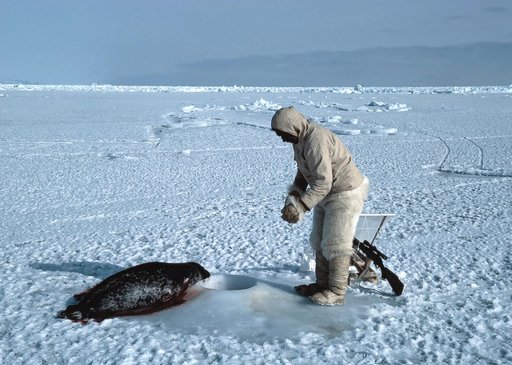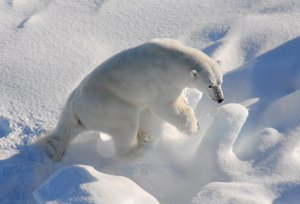AMAP (Arctic Monitoring Assessment Programme) is one of the five working groups under the Arctic Council, which is an intergovernmental body consisting of eight countries with Arctic areas collaborating on Arctic issues. AMAP aims to monitor and assess pollutants and climate change in the Arctic region. AMAP produces assessments both on a scientific basis and for the Arctic governments, information material for the general public, and the associated researchers prepare a wide range of scientific publications.
In the early 2000s, the substance PFOS became a hot topic for many Arctic environmental researchers after the first reports on the rising concentrations in Arctic animals were published. PFOS belongs to the group of perfluorinated substances and is typically used when there is a need for a water and/or fat-repellent effect, e.g. in outdoor clothing (Gortex), shoes, Teflon pans or grease-repellent food packaging.
Studies of PFOS in ringed seals and polar bears in Greenland have shown that the concentration rose significantly up to 2005, after which it fell just as markedly in animals from both west and East Greenland. Presumably, the decline is mainly due to the fact that the production from the largest American producer, 3M, ceased in the year 2000.
Regular analyses are carried out for substances in Greenlandic animals, where it is estimated that a risk may eventually develop to health in humans and animals in the Arctic, just as the well-known PCBS and DDT did a years ago.
One example is the flame inhibitor hexabromocyclododecane (HBCDD), where studies of the trend in concentration levels in Arctic animals have not given a clear answer. In Greenland's polar bears, the concentration in recent years seems to have declined after having increased up to 2015. In 2013, HBCDD was added to the Stockholm Convention's list of substances where production should be discontinued or restricted. Monitoring in the coming years will show whether this decreasing trend continues.

AMAP was established in 1991.
In 1994, Denmark set up an environmental support scheme for the Arctic (former Danish Cooperation for Environment in the Arctic (DANCEA), now "Environmental support for the Arctic"), which over the years has made it possible to conduct a number of studies that illustrate various environmental aspects of Greenland. Several of the department's academic staff have been involved in the AMAP work from the beginning, and we have carried out a large number of projects that have focused particularly on the topics:

Thus, we have studied the effects on seals, toothed whales and polar bears to examine how heavy metals and organic pollutants (POPs) affect the reproduction, immune system, bones and general health of these species. In addition, we use the results from the chemical analyses to assess the extent to which the local population is exposed to concentrations of these substances that are above the established international and national threshold values, through the local diet, particularly of seabirds, seals, toothed whales and polar bears. This is reported in AMAP Assessments and in numerous articles.
AMAP regularly publishes international assessments in which our environmental researchers have participated – often in a prominent role. The most recent examples are available at the following links:
